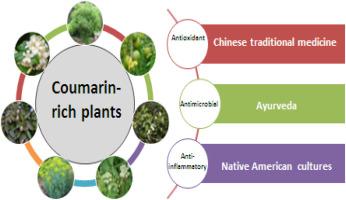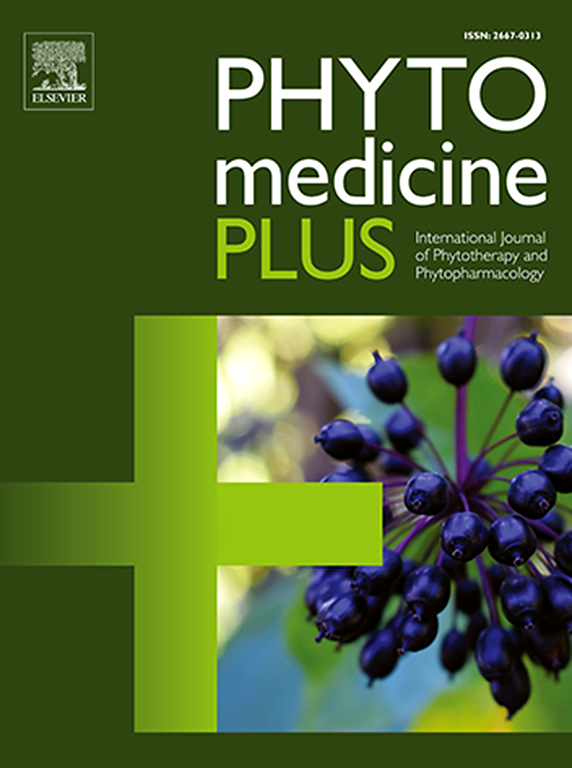传统医学中的香豆素:连接古代智慧和科学进步
Q3 Pharmacology, Toxicology and Pharmaceutics
引用次数: 0
摘要
香豆素是一种多种天然化合物,在传统医学中具有广泛的治疗潜力。这篇叙述性回顾探讨了他们从古老的治疗传统(如阿育吠陀、传统中医和各种土著系统)到当代生物医学的历程。香豆素广泛分布于药用植物中,历来被用于治疗炎症、微生物感染和氧化应激相关疾病。这些传统应用越来越多地得到现代药理学证据的支持。在结构上,香豆素具有显著的化学多样性,具有广泛的生物活性,包括抗炎、抗氧化、抗菌和抗凝血作用。此外,这篇综述强调了古代实践如何有效地利用这些生物活性特性,其中许多现在通过实验和临床研究得到了验证。另一方面,提取方法、合成修饰和给药系统的进步改善了香豆素的药代动力学特征,扩大了香豆素的潜在用途。尽管它们很有前景,但必须解决安全性问题,特别是肝毒性和剂量依赖性效应,以确保临床相关性。虽然天然香豆素通常显示出良好的治疗指标,但合成衍生物需要仔细评估。最后,本综述旨在系统探讨香豆素在传统医学中的历史应用、药理意义和治疗整合,同时探讨其在现代药理学中的潜在转化价值。将民族药理学的智慧与当代科学相结合,香豆素成为综合药物开发的有希望的候选人。它们在治疗被忽视疾病和与其他药物协同作用方面的潜在作用值得进一步探索。本文章由计算机程序翻译,如有差异,请以英文原文为准。

Coumarins in traditional medicine: Bridging ancient wisdom and scientific progress
Coumarins are a diverse group of naturally occurring compounds long recognized in traditional medicine for their broad therapeutic potential. This narrative review explores their journey from ancient healing traditions—such as Ayurveda, Traditional Chinese Medicine, and various indigenous systems—to their contemporary biomedical relevance. Widely distributed in medicinal plants, coumarins have historically been used to treat inflammation, microbial infections, and oxidative stress-related conditions. These traditional applications are increasingly supported by modern pharmacological evidence. Structurally, coumarins exhibit significant chemical diversity, enabling a wide range of bioactivities, including anti-inflammatory, antioxidant, antimicrobial, and anticoagulant effects. Moreover, this review highlights how ancient practices effectively utilized these bioactive properties, many of which are now validated through experimental and clinical studies. On the other hand, advances in extraction methods, synthetic modifications, and drug delivery systems have improved the pharmacokinetic profiles and expanded the potential uses of coumarins. Despite their promise, safety concerns, particularly hepatotoxicity and dose-dependent effects, must be addressed to ensure clinical relevance. While natural coumarins generally display a favorable therapeutic index, synthetic derivatives require careful evaluation. Finally, this review aims to systematically explore the historical applications, pharmacological relevance, and therapeutic integration of coumarins in traditional medicine, while addressing their potential translational value in modern pharmacology. Bridging ethnopharmacological wisdom with contemporary science, coumarins emerge as promising candidates for integrative drug development. Their potential roles in treating neglected diseases and interacting synergistically with other agents warrant further exploration.
求助全文
通过发布文献求助,成功后即可免费获取论文全文。
去求助
来源期刊

Phytomedicine Plus
Medicine-Complementary and Alternative Medicine
CiteScore
3.70
自引率
0.00%
发文量
178
审稿时长
81 days
期刊介绍:
 求助内容:
求助内容: 应助结果提醒方式:
应助结果提醒方式:


